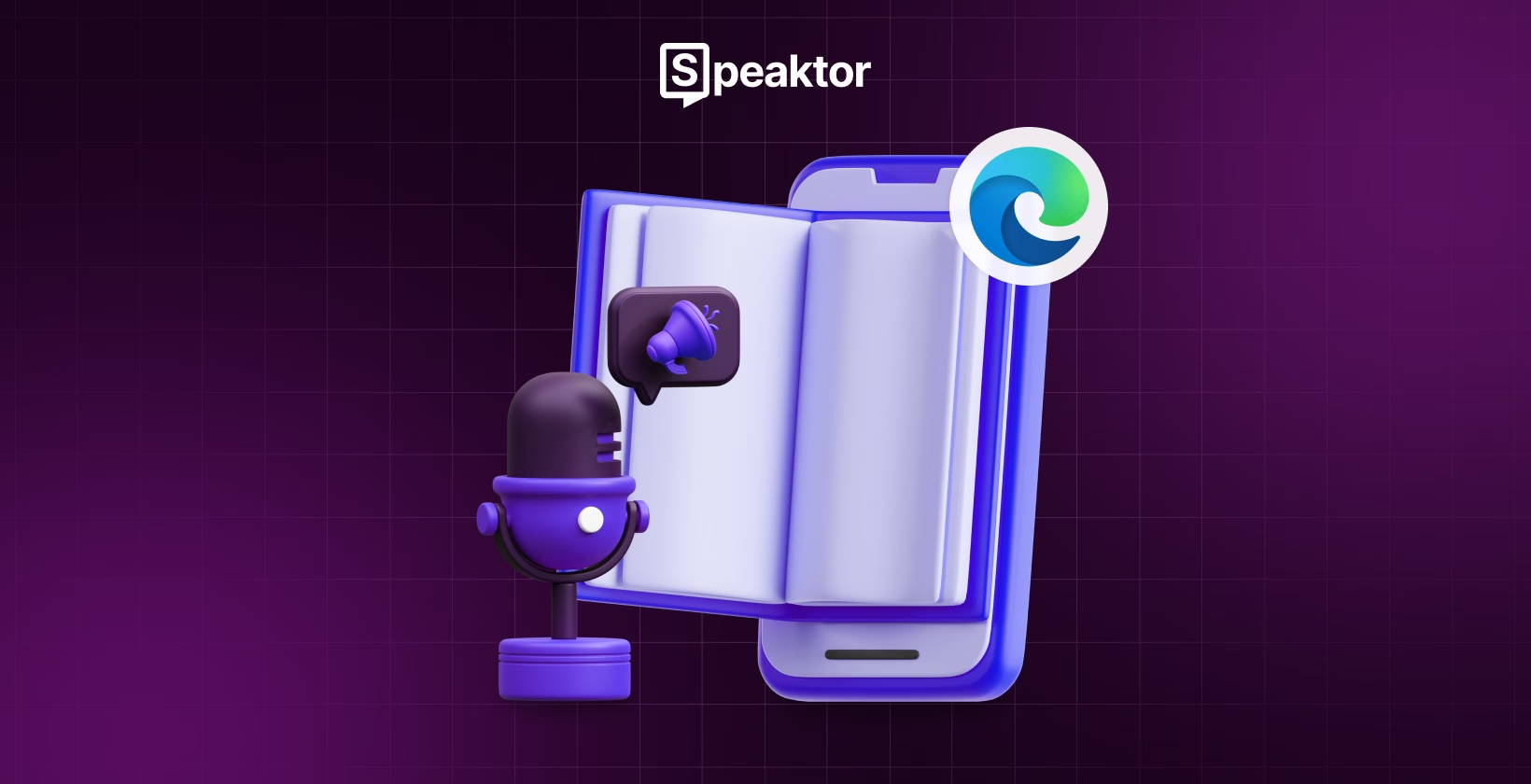
How to Use Microsoft Edge Read Aloud Feature
Transcribe, Translate & Summarize in Seconds
Transcribe, Translate & Summarize in Seconds
Brief Answer: If you want to use Microsoft Edge Read Aloud, open any webpage or PDF, then activate the feature using the keyboard shortcut (Ctrl+Shift+U), the right-click menu, or the Immersive Reader icon. Control playback with the on-screen toolbar to adjust voice, speed, and navigation.
Have you ever wished your browser could read a webpage or a PDF to you while you multitask or take notes? Microsoft Edge Read Aloud makes that possible, and you can start it instantly using a context menu click, keyboard shortcut, or the Immersive Reader's "open book" icon.
While its polished voices are its strong points, Microsoft Edge Read Aloud does have its own quirks. It sometimes struggles with math-heavy PDFs and may pause or sync incorrectly on complex page layouts. Still, if you’d like to try Edge’s built-in option, here is a quick step guide:
Quick Step Guide
- Use Keyboard Shortcut and Right-Click Menu: Press Ctrl + Shift + U to instantly launch Read Aloud. Then, right-click on a page or text selection and choose Read aloud.
- Access More Tools: Go to the three-dot menu > More tools > Read aloud.
- Select the Immersive Reader: Click the Immersive Reader icon and select Read aloud from the toolbar.
Now take a more detailed look at the steps to enable the read-aloud feature in Microsoft Edge.
1. Use Keyboard Shortcut and Right-Click Menu
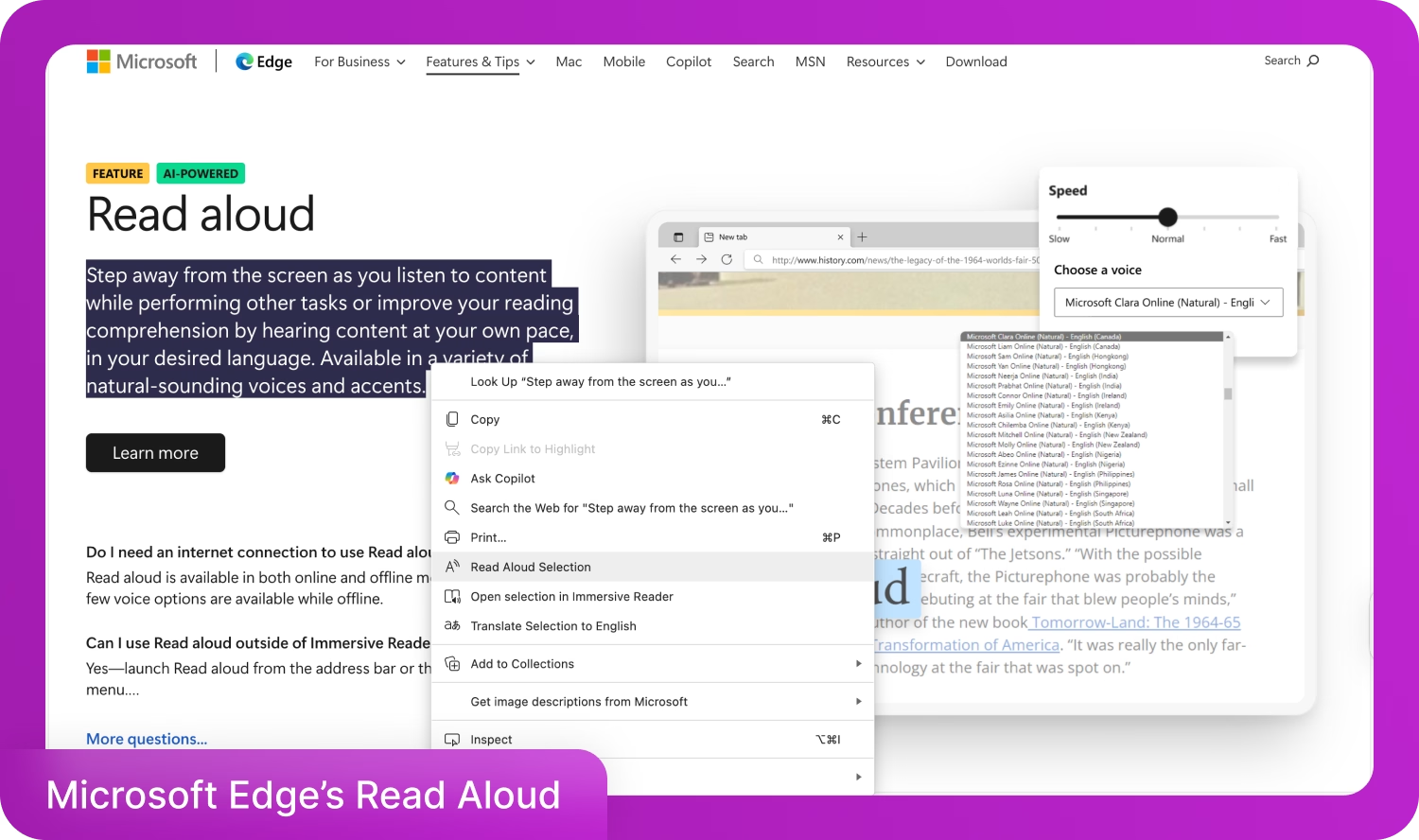
Press “Ctrl+Shift+U” on your keyboard while viewing a webpage or a selectable text PDF to immediately launch Read Aloud. The playback controls appear in a toolbar at the top of the page; no need to look through menus. Then, simply right-click anywhere on the page (or on a highlighted selection) and choose "Read aloud" or "Read aloud selection" from the context menu.
2. Access More Tools
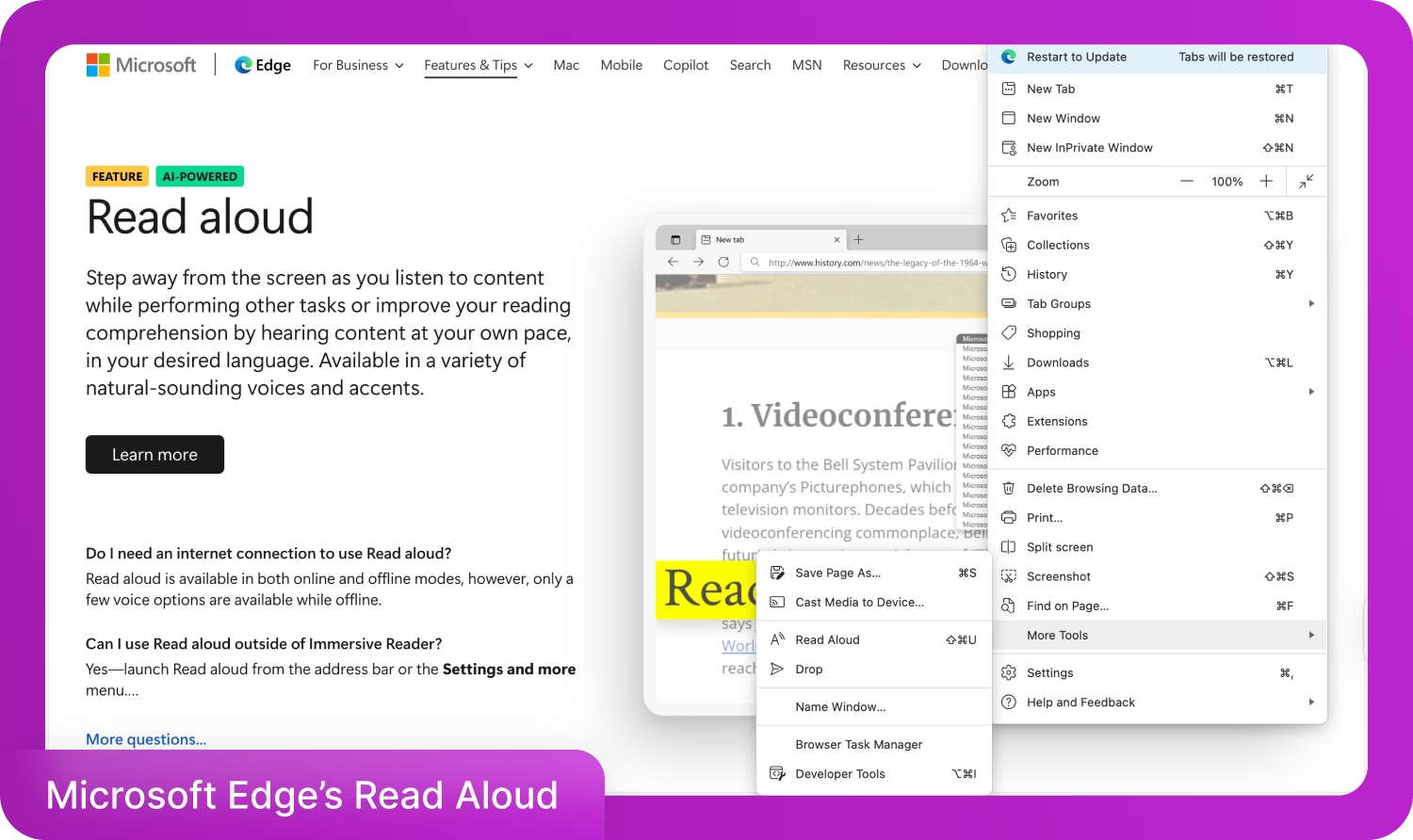
Click the More menu (three dots) in the upper‑right corner, navigate to More tools, and select Read aloud. This is handy if you prefer using menus rather than shortcuts or context menus.
3. Select the Immersive Reader

Click the Immersive Reader icon (shaped like an open book or book with a speaker) in the address bar. Then click Read aloud from the Immersive Reader toolbar to begin.
What are the Other Read Aloud Options?
The other Read Aloud options apart from Microsoft Edge include text-to-speech tools like Speaktor. While built-in options like Microsoft Edge’s Read Aloud can be useful, they often struggle with complex layouts and natural-sounding playback. That is where Speaktor comes in as a perfect read-aloud option. Speaktor is a text-to-speech tool that offers 50+ languages and 14+ human-like voices that go perfectly with different kinds of content. With no limitations on place or time, Speaktor's phone app makes listening to your favorite content a breeze. Here is how to use Speaktor to read aloud PDFs, books, or any type of content.
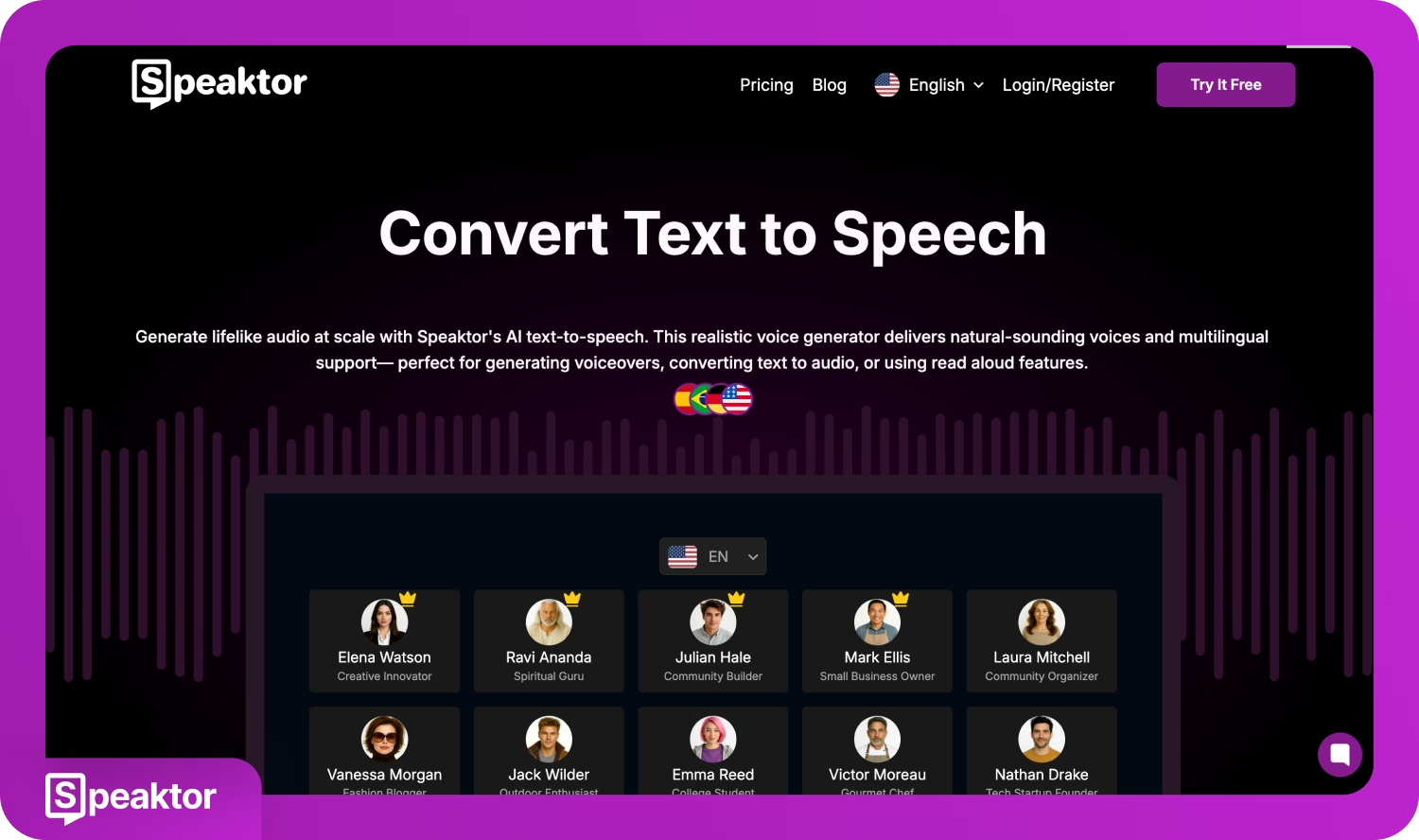
How to Use a Speaktor to Read Aloud?
If you want to use Speaktor, first create an account using Gmail or a Google account. Access your dashboard, type, paste, or upload the content, choose voices, and listen to the audio at your preferred speed. You can use both the desktop and mobile app as per your convenience. Here is how to use Speaktor to read aloud PDFs, books, or any type of content.
Quick Step Guide
- Create Speaktor Account: Create your account by using a Google account or Gmail.
- Paste or Type the Content: Type, paste, or upload the content file and click "Next."
- Choose Your Preferred Voice: Choose your voice and click "Play." If you have a premium plan, choose premium voice and emotions from angry, conversational, calm, or cheerful.
- Download the Audio: Listen and download the audio in WAV or MP3 format.
1. Create Speaktor Account
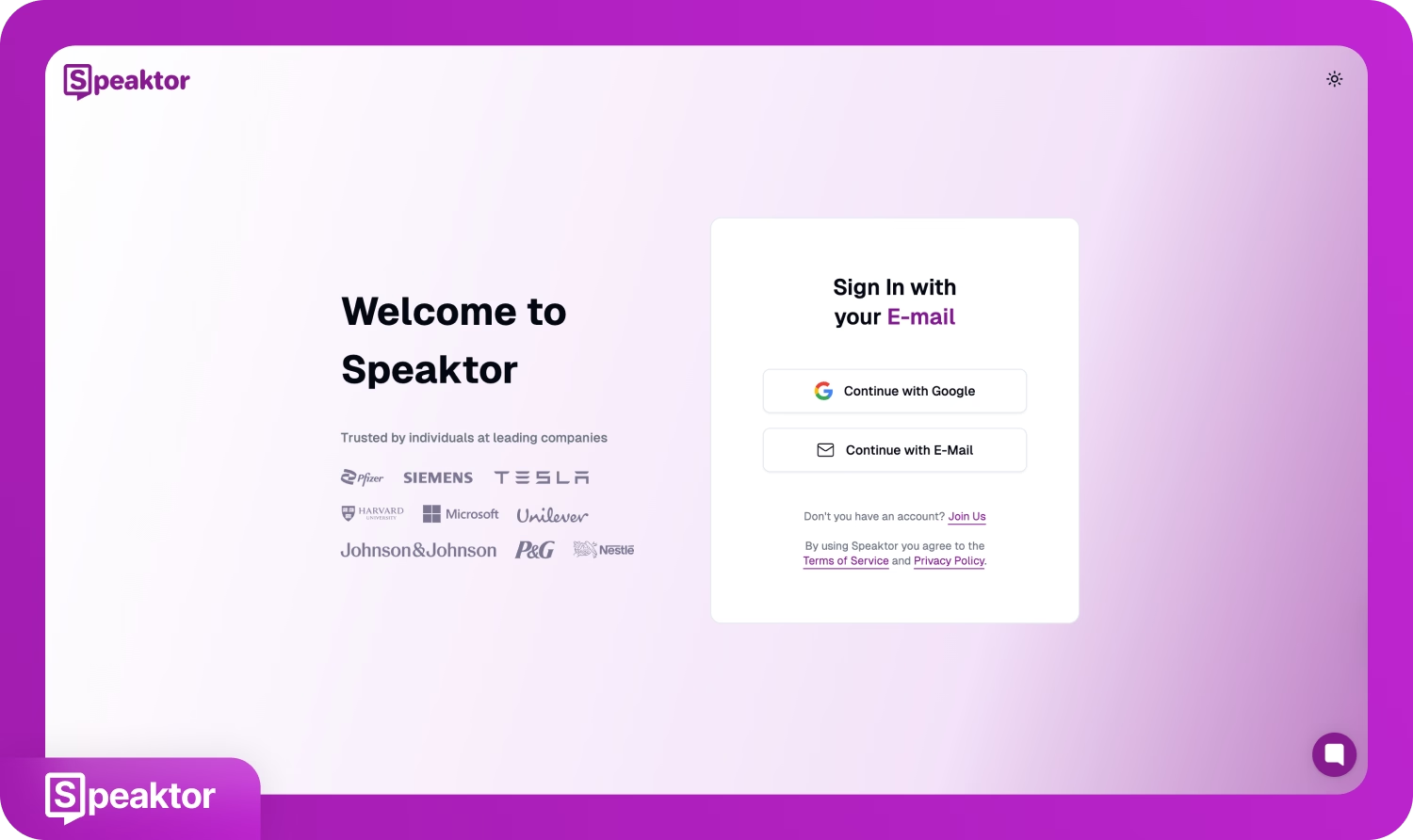
Visit the official website and click on the "Login/Register" button. You can continue with Google or enter your email.
2. Paste or Type the Content
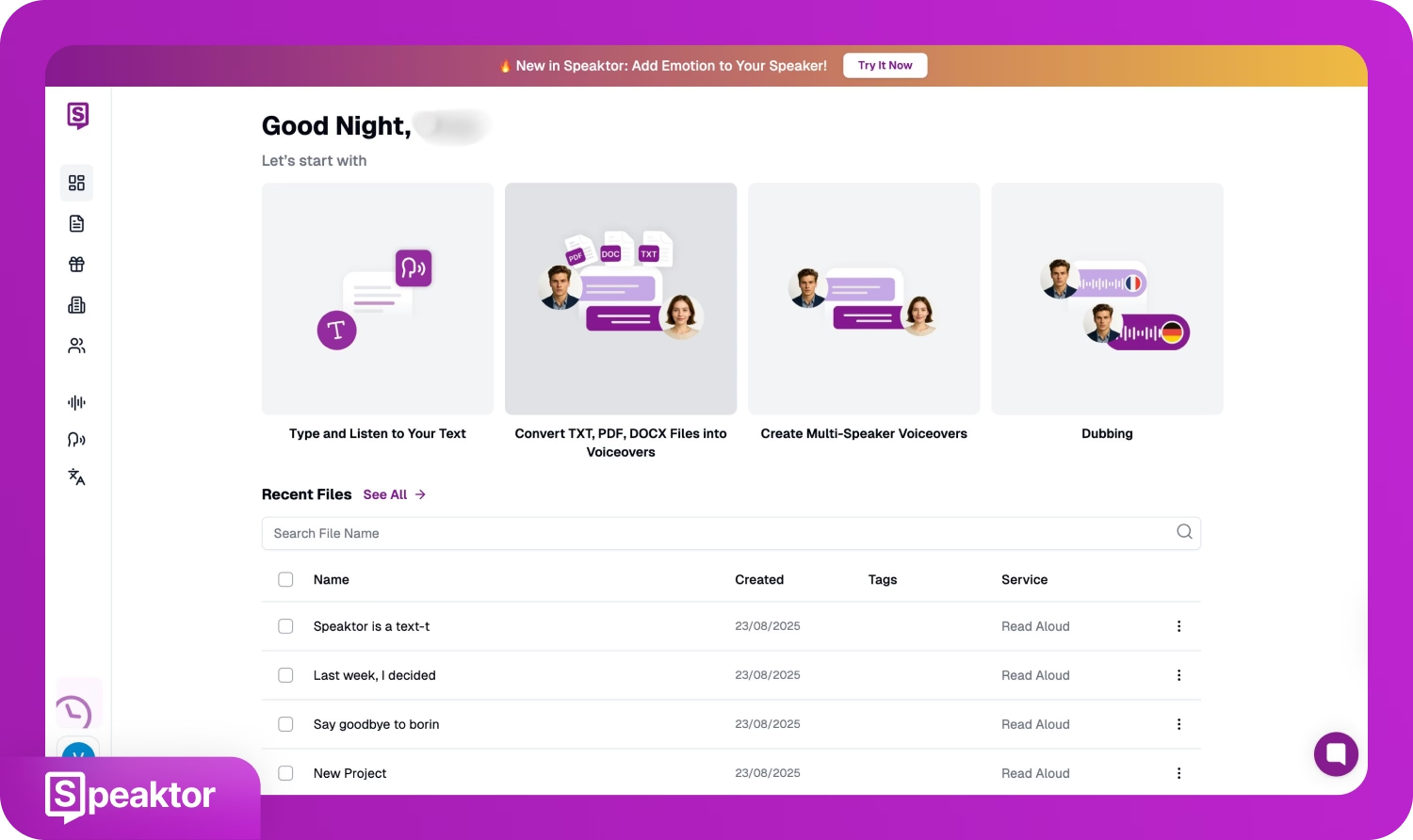
Click the "Type and Listen to Your Text" option on the Speaktor dashboard and then click "Next."
3. Choose Your Preferred Voice
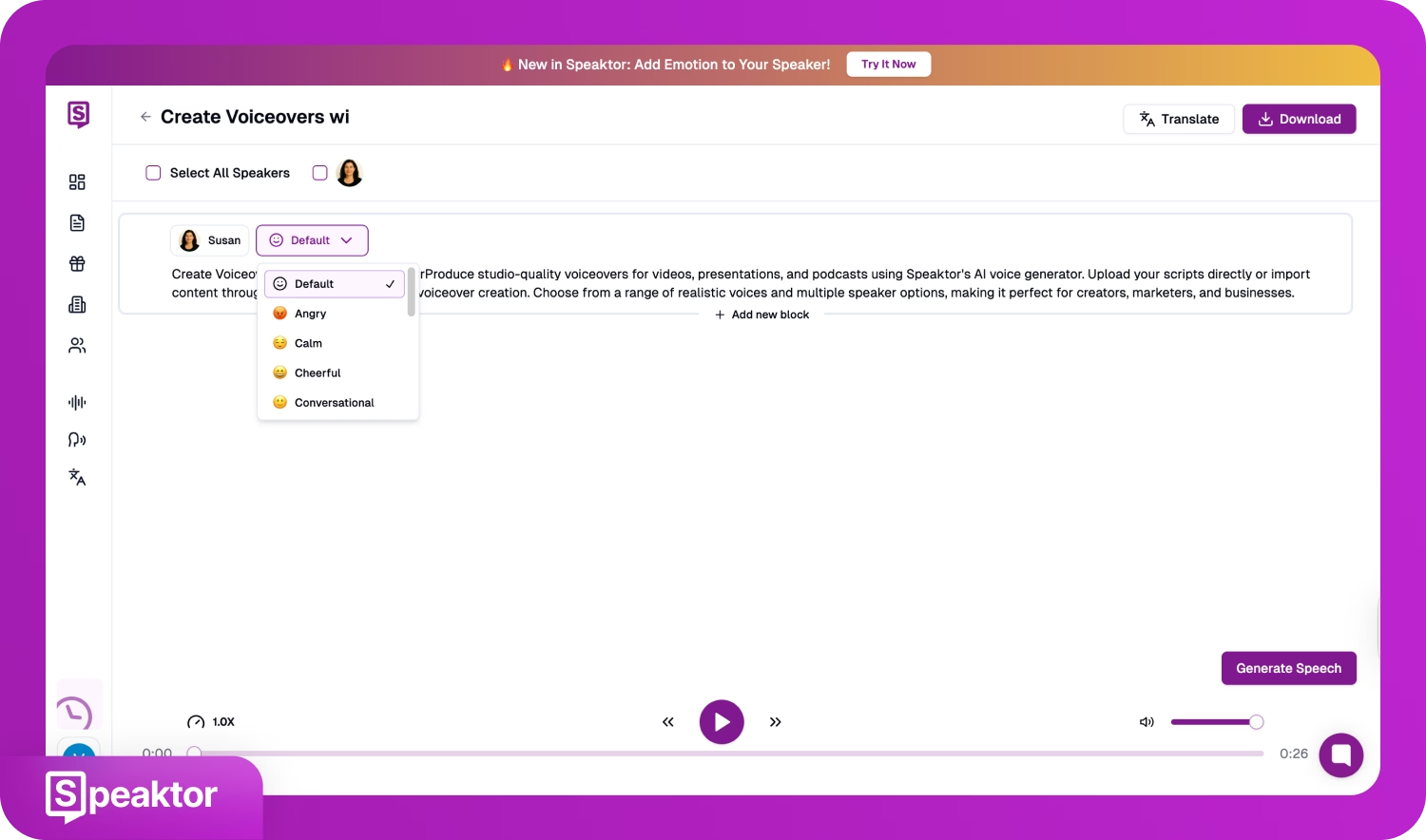
Select a voice that aligns with your content's tone. If you are using a premium voice, click the dropdown menu and set the emotions like angry, calm, and more.
4. Download the Audio
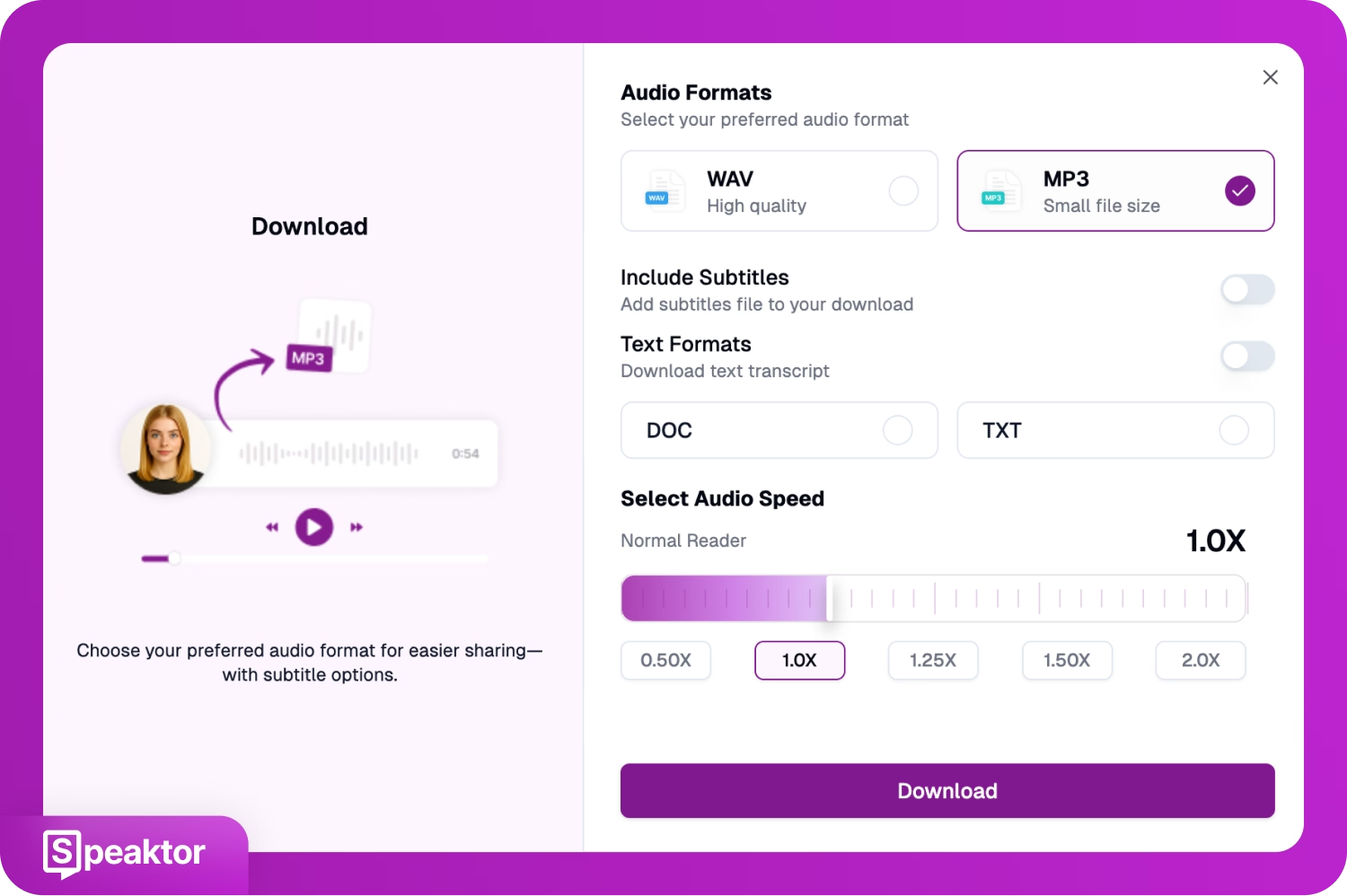
Click the "Download" sign and choose the audio format from WAV or MP3.
Microsoft Edge vs. Other TTS Tools: Which Should You Use?
Choosing between reading a webpage aloud in Microsoft Edge and using a third-party TTS tool depends on your goals and setup. Edge is fast and built-in, while alternatives shine when you need deeper customization or more control.
When to Use Microsoft Edge?
- No‑installation Solution: You want a built‑in, no‑installation solution that can seamlessly read webpages aloud in Microsoft Edge, read aloud PDFs in Microsoft Edge, or even let you disable Read Aloud in Microsoft Edge easily via settings.
- Cross-Platform Functionality: You work across both desktop and mobile environments and appreciate having one consistent, integrated tool.
When to Use Third-Party TTS Tools?
- Advanced Voice Features: If you need more advanced voice features than what Microsoft Edge offers, a third-party text-to-speech tool is the better choice. These tools give you much more control; you can choose from different accents, adjust how the voice sounds (such as making it more natural, emotional, or clear), and fine-tune the speed and pitch to match your needs.
- Content Creation: They are also ideal if you are creating content to share with others, like YouTube videos, podcasts, training guides, or presentations. With these tools, you can convert text to audio and download it as an MP3, which makes it easy to use across different platforms. Some even allow you to create custom scripts and produce professional-quality voiceovers.

Why is Microsoft Edge's Read Aloud Feature Important?
Microsoft Edge's Read Aloud feature is important because it makes digital content more accessible by turning webpages and PDFs into audio, which is especially helpful for students, multitaskers, and anyone looking to reduce screen time. It supports natural-sounding voices, adjustable speeds, and easy navigation, creating a smooth listening experience across devices.
However, the tool struggles with content that includes complex formatting, such as equations or scientific notation, which it often skips or misreads. For users in STEM fields, this can be a challenge and may require alternative read-aloud tools for better accuracy.
What Are Some Tips for Using Microsoft Edge Read Aloud?
Try different voices, adjust reading speed, and ensure you are listening to the content in a quiet environment. Here are some practical and user-friendly tips to enhance your experience with Microsoft Edge Read Aloud.
- Try Different Voices: Choose from various natural-sounding voices, including different genders and accents, until you find one that makes listening easier and more enjoyable.
- Adjust the Reading Speed: Fine-tune the pace to your comfort level. Slower speeds can help with comprehension, while faster ones are ideal for skimming familiar content.
- Combine with Immersive Reader: Activate Immersive Reader before using Read Aloud to eliminate visual distractions and create a cleaner reading environment.
- Use Highlighting to Follow Along: Edge's Read Aloud feature highlights the text as it is read, helping you track the narration and improve comprehension.
- Ensure a Quiet Listening Environment: Background noise can disrupt clarity. Use headphones or move to a quieter space for focused listening.
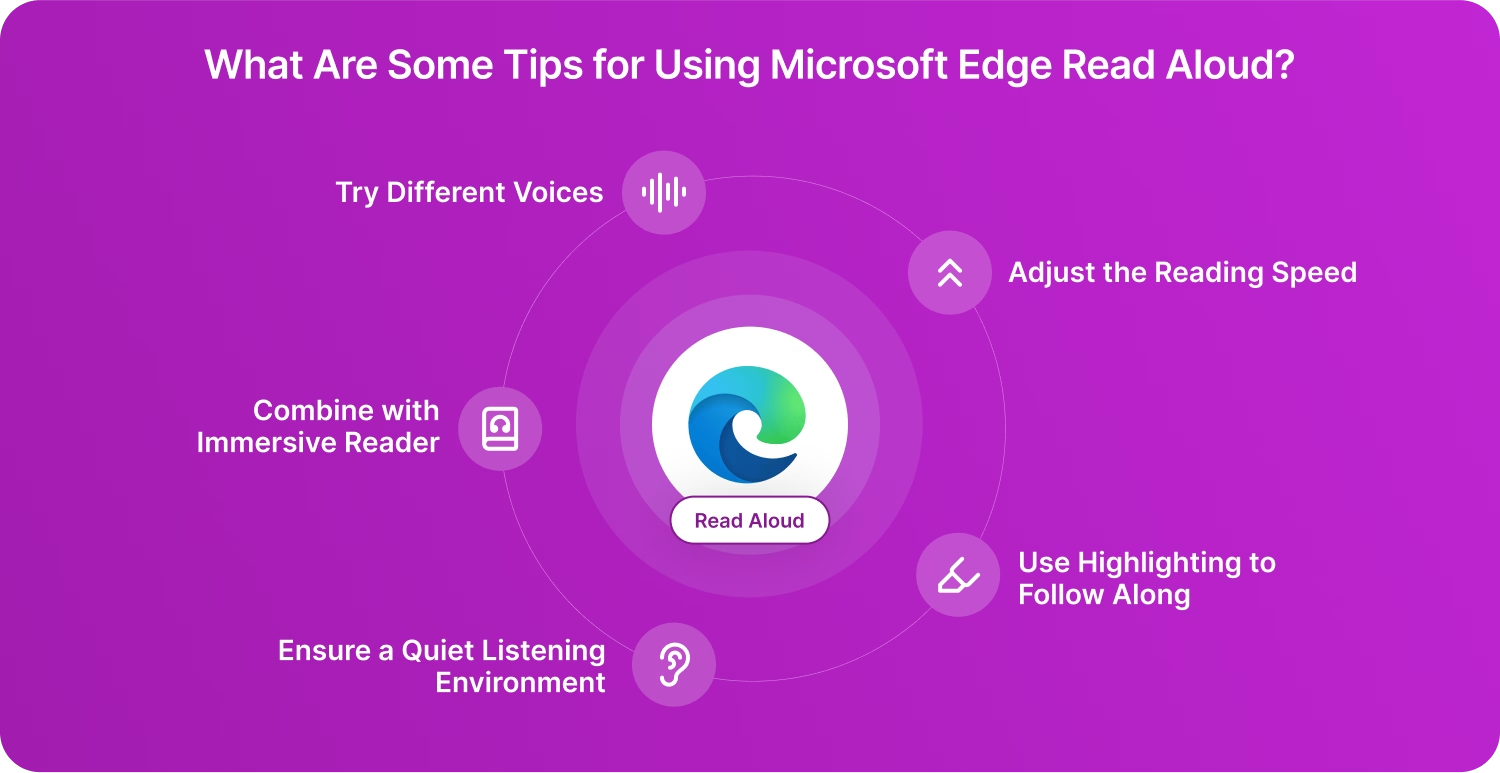
Conclusion
Microsoft Edge Read Aloud is a convenient feature that lets you transform webpages and readable PDFs into spoken audio, great for multitasking, studying, or reducing screen fatigue. While its built-in voices and seamless integration make it a go-to option, keep in mind it may glitch with math-heavy or highly formatted content. If you need more precision or flexibility, tools like Speaktor can bridge that gap by offering better control and natural sound. Give Speaktor a try. You may find it's exactly what you need to listen smarter!
Frequently Asked Questions
Edge caps the reading speed at a "Fast" setting. While users frequently wish for faster options, there is currently no setting beyond that. If the max speed still feels slow, you can submit feedback to Microsoft or try Speaktor, where you can adjust the speed from 0.5x to 2.0x with high-quality voice.
If the voice sounds unnatural or robotic, try third-party tools like Speaktor. It offers various voice options, including different tones such as calm, angry, cheerful, and conversational. If you want to make the meeting notes read aloud, select a business owner's voice or choose a spiritual tone for reading hymns with the same tone.
Certain formatting elements, such as long parentheses or hyphenated words (common in scientific or academic PDFs), can cause Read Aloud to slow down, mispronounce, or lose its pacing. Many users and developers agree that settings to better handle these, like skipping parentheticals or treating hyphenated words as a single unit, would greatly improve the experience.
When using Read Aloud, especially within PDFs, the feature typically grays out non-focused content and highlights only the current line or word being narrated. While this immersive style is intentional, it can feel visually disorienting or distracting. Unfortunately, there is no setting yet to revert this to full-page live highlighting.
The natural voices need an internet connection and sometimes disappear after updates. If you only see basic voices like David, Mark, and Zira, first make sure you're connected to the internet since natural voices are cloud-based. Try going to edge://flags/ in your address bar, search for "New PDF Viewer," and switch it to "Disabled," then restart Edge. You can also add more natural voices by going to Windows Settings > Time & Language > Language, then adding language packs, which include better voice options.

